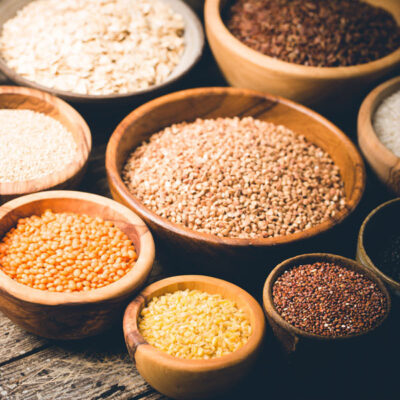Brands
Galangal vs ginger...and turmeric
By: admin On: 27 August 2021

Galangal, ginger and turmeric are related plants but have differences The difference is subtle yet important in food preparation.
Galangal vs ginger may be an obvious comparison but did you know that turmeric is related to both? Here's how to get the best from all three and use them to maximum effect in your cooking.
A trio of rhizomes
Galangal, ginger and turmeric all belong to the ginger family. The part of the plant that we use for cooking is known as a rhizome. Although botanically speaking it is different, you can just think of it as a root. Hence the name root ginger, for fresh ginger.
What is galangal?
Let's begin with the least well known of our trio. There are several varieties of galangal but greater galangal, also known as Thai ginger, is native to Java and used primarily in South East Asian cooking. Particularly associated with Thai food, galangal is also used in China, Malaysia, Singapore and Indonesia.
The fresh rhizomes are often sold alongside ginger and turmeric. It looks pretty similar to ginger but has a thinner skin with noticeable striped rings.
Turmeric and ginger
Ginger, in both its fresh and dried forms, is probably the most familiar. Found all over the world, it is used in a wide range of dishes both savoury and sweet. The fresh root is slightly larger than the other two, and is sold in chunky branches known as a hand. The skin is light brown and thicker than that of galangal and turmeric.
Unless you were aware that turmeric is a root related to ginger you would probably never guess, as we are most familiar with it in its dried form. Turmeric is the smallest and sold as individual fingers rather than branching hands. The skin is also light brown, but the orange beneath is easily discernible. Like galangal, it is noticeably striped. Fresh turmeric is used in the same way as ginger or galangal.
Galangal vs ginger
The difference between ginger and galangal is subtle yet important. The two are not interchangeable and are in fact sometimes used together.
We use ginger, galangal and turmeric together in our South East Asian spice blend and they all play a different role.
What does galangal taste like?
Galangal has an overall lighter aspect than ginger. Sharp on the tongue it is more citrussy and has a hot clean taste.
Ginger can also be citrussy but is sweeter than galangal, with more peppery notes. It is deep, pungent and tangy.
Turmeric is nothing like the other two. It is earthy and bitter, with only a slightly spicy undertone.
Fresh ginger vs dried
The dried forms of all three of these spices, are completely different to the fresh roots. Yet what they lose in terms of bright citrussy top notes they gain in depth of flavour. Most cuisines use both fresh and dried, for different purposes, and they are considered simply different not inferior.
How to use dried galangal
As already noted, dried galangal is not really a fresh galangal substitute but is used in South East Asian food for different purposes. That said, a high quality product such as our organic galangal powder has a surprisingly fresh flavour. Stored well and used wisely you will find a happy compromise.
We use galangal powder in this quick and easy hot and sour soup. The same post features dried ginger in a recipe for quick and easy Singapore black pepper chicken.
Galangal powder is found in many spice blends, including Rendang curry powder and Laksa spice mixes. It is of particular use in seafood dishes where it neutralises those over-fishy flavours. Use in soups, curries and stir fries.
Ginger powder goes surprisingly well with vegetables, in particular squash, pumpkin or carrots. You can also use it to tenderise meat before grilling. Try mixing our organic ginger powder with just salt and pepper before using as a dry rub; make the ginger the star of the show. Ginger is found in most curry powder blends, as well as BBQ rubs and jerk spice.
Turmeric powder is an amalgamating spice which means that not only does it pretty much go with everything but it also brings the other spices together in harmony. A sprinkle of organic turmeric powder over cauliflower before roasting is really good. Turmeric finds its way into so many spice blends because of this harmonising quality.
It is worth noting that turmeric is nothing like saffron. Yes, it can be used to colour things orange but any similarity stops there. You can make delicious yellow rice with turmeric that has lovely earthy tones.
A bonus recipe for fragrant yellow rice
Add to the pan of boiling water, in with the rice, 1/2 teaspoon turmeric, 1 cinnamon stick, a few cardamom pods and a bay leaf. Drain when cooked and pick out the whole spices before serving.
Take a look at our full range of organic Asian spices and other groceries. All of our Asian sauces and condiments are available to buy in bulk wholesale along with other organic groceries.






